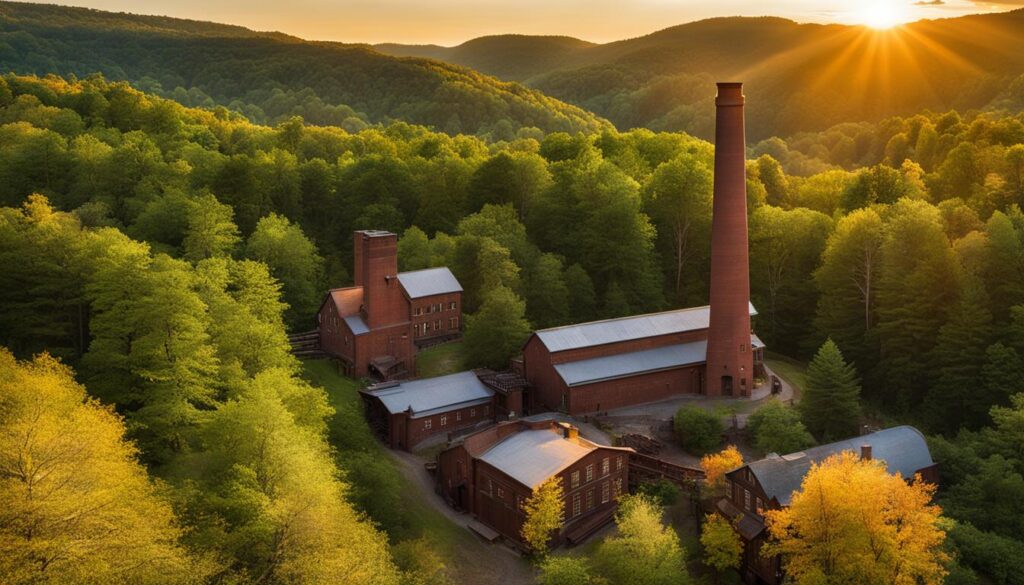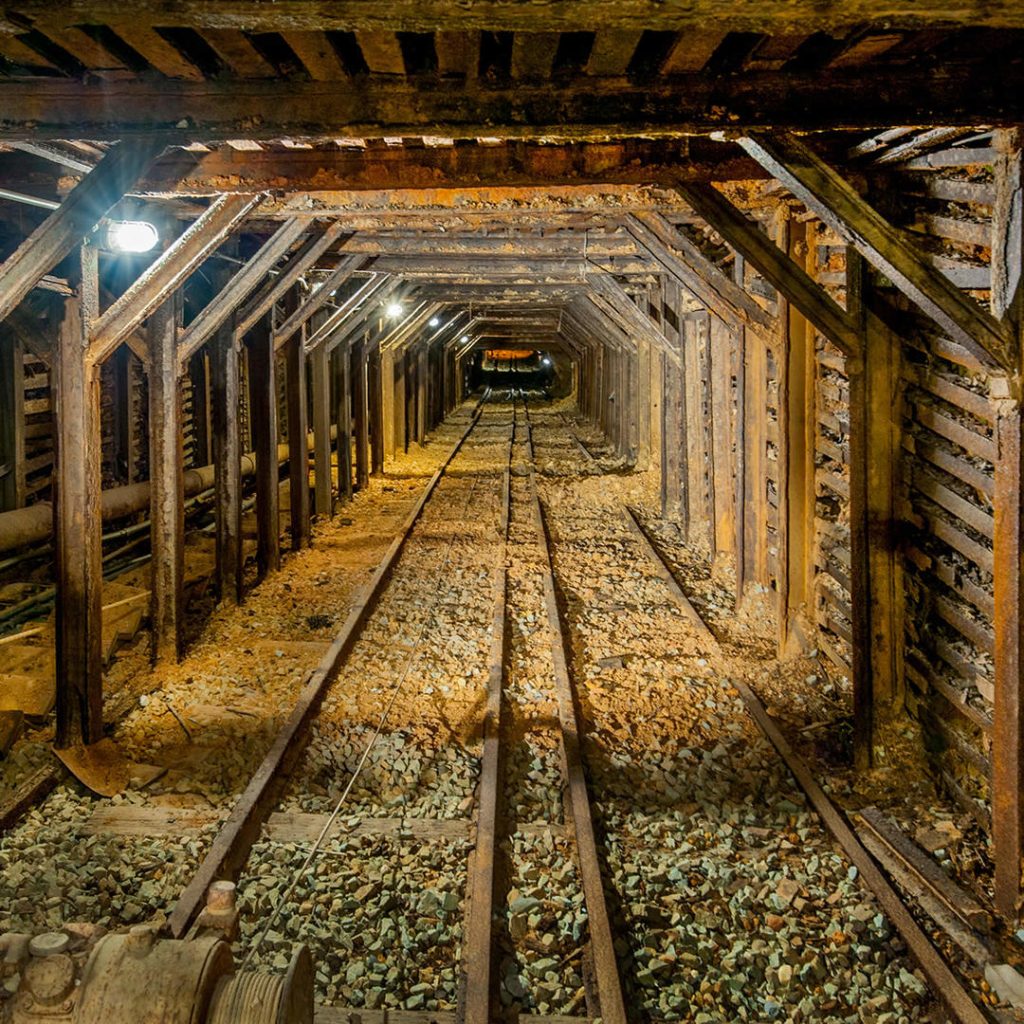
Deep Beneath the Golden State: The Enduring Legacy of the Empire Mine
In the heart of California’s historic Gold Country, where sun-dappled pathways wind through towering pines and the air hums with the ghosts of a bygone era, stands the Empire Mine. It is not merely a collection of old buildings and dusty artifacts; it is a silent sentinel, a monumental testament to human ambition, technological innovation, and the relentless pursuit of fortune. For over a century, from its unassuming beginnings in 1850 to its closure in 1956, the Empire Mine was California’s deepest, richest, and longest-operating gold mine, unearthing millions of ounces of the precious metal and leaving an indelible mark on the landscape, the economy, and the very soul of the Golden State.
Today, as Empire Mine State Historic Park, it offers a window into a world where fortunes were made and lives were lost, where the promise of gold lured men into the dark, unforgiving depths of the earth. The story of the Empire Mine is a saga of staggering wealth, back-breaking labor, and the intricate dance between man and nature, a narrative that continues to resonate with visitors who walk its grounds and ponder its profound legacy.
The Spark of Gold: From Surface Scratches to Deep Veins

The tale of the Empire Mine begins, as many California stories do, with the discovery of gold. While James Marshall’s 1848 find at Sutter’s Mill ignited the initial rush for placer gold in riverbeds, it was the subsequent realization that the Mother Lode stretched in quartz veins deep beneath the surface that transformed the fleeting frenzy into a sustained industry. In 1850, a local blacksmith named George D. Roberts stumbled upon a rich outcropping of gold-bearing quartz near what would become Grass Valley. His discovery, initially worked as a simple surface claim, quickly evolved into something far more significant.
Early mining efforts were rudimentary, relying on arrastras – primitive mills powered by mules dragging heavy stones – to crush the quartz and release its golden treasure. But the veins proved remarkably persistent and rich, prompting the formation of the Grass Valley Gold Quartz Mining Company and the beginning of systematic underground excavation. As the mine deepened, so did the investment in machinery and expertise. Stamp mills, with their thunderous, rhythmic pounding, replaced the arrastras, capable of processing tons of ore daily. Cornish miners, with their centuries of hard-won knowledge from the tin and copper mines of England, flocked to Grass Valley, bringing with them not just their skills but also their culture, shaping the very character of the community.
An Empire Forged in Darkness: Depth, Riches, and Innovation
What truly set the Empire Mine apart was its sheer scale and the incredible tenacity with which its owners and miners pursued the gold. Over its 106-year operational history, the mine produced an astonishing 5.8 million ounces of gold, an amount that would be worth billions of dollars in today’s market. But it was not just the quantity; it was the depth. By the time of its closure, the Empire Mine had burrowed an incredible 11,000 feet down an incline shaft, with its deepest vertical point reaching approximately 3,200 feet below the surface. This labyrinthine network comprised over 367 miles of underground tunnels, drifts, and stopes – a subterranean city carved out of solid rock, stretching further than the distance from San Francisco to Los Angeles.
This immense undertaking required constant innovation. As the mine deepened, new challenges arose: water infiltration, ventilation, and the sheer logistics of moving rock and men. The Empire Mine became a crucible of technological advancement. Giant Cornish pumps, often running continuously, battled the ever-present groundwater. Air drills, powered by massive compressors, replaced hand-held steel and hammers, vastly increasing the speed of excavation. Dynamite, carefully handled by experienced "powder men," blasted through the stubborn quartz. Electric hoists, capable of lifting tons of ore and scores of miners in a single trip, streamlined operations.
"The Empire Mine was a marvel of engineering," explains a park ranger during a historical tour. "It was constantly pushing the boundaries of what was possible in hard rock mining. Every new challenge led to an invention, a refinement, a new way to get to that elusive gold."
The Human Element: Lives Forged in Rock and Danger
Beneath the ground, the story of the Empire Mine was not one of gleaming gold but of calloused hands, sweat, and unrelenting danger. Thousands of men, from various backgrounds, toiled in the stifling heat and oppressive darkness, often for meager wages. A miner’s life was a gamble with fate, a constant exposure to peril. Cave-ins, explosions from faulty dynamite, and the ever-present threat of silicosis – a debilitating lung disease caused by inhaling quartz dust, often referred to as "miner’s consumption" – were grim realities.

"My grandfather worked the Empire for forty years," one local resident recounted. "He saw men die, he coughed up dust his whole life, but he fed his family. That’s what it was about for them – survival."
The community of Grass Valley grew up around the mine, its fortunes intrinsically linked to the ore pulled from the earth. Many miners were of Cornish descent, their traditions of pasties, wrestling, and brass bands enriching the cultural fabric of the town. They formed tight-knit communities, sharing the dangers and the camaraderie that came from facing death together daily. Labor disputes were not uncommon, as miners sought better wages and safer working conditions, occasionally leading to strikes that underscored the tension between the mine’s immense profits and the harsh realities faced by its workforce.
The Bourn Legacy: Vision, Consolidation, and Opulence
While countless men toiled in the depths, the Empire Mine’s trajectory was profoundly shaped by a few powerful individuals. Chief among them was William Bowers Bourn II, a visionary capitalist who inherited the mine in 1869 at the age of 21. Bourn, a shrewd businessman with an eye for both profit and aesthetics, transformed the Empire. He modernized operations, invested heavily in the latest technology, and consolidated smaller claims, eventually forming the Empire Star Mines Company in 1929, which brought together the Empire and several other major mines in the region.
Bourn’s influence extended beyond the mine’s operations. He built a magnificent stone mansion, known as the "Bourn Cottage," directly on the mine property. This elegant estate, surrounded by meticulously manicured gardens, stood in stark contrast to the gritty, dangerous world beneath. It was a visible symbol of the immense wealth extracted from the earth, a testament to Bourn’s success, and a constant reminder of the chasm between the mine owner and the men who risked their lives for his fortune.
A fascinating anecdote illustrates Bourn’s connection to the mine. It’s said he personally selected the timbers for the main shaft, insisting on only the finest redwood. His deep understanding of the mine’s infrastructure, combined with his business acumen, cemented the Empire’s place as a dominant force in California mining.
The Twilight of an Era: Closure and a New Beginning
The Empire Mine, like all empires, eventually faced its decline. By the mid-20th century, a confluence of factors made gold mining increasingly difficult and less profitable. The fixed price of gold, set at $35 an ounce by the U.S. government, remained unchanged for decades, even as operational costs – labor, electricity for pumping and hoisting, and the challenges of mining ever-deeper and more remote veins – steadily increased. The mine was producing gold, but the profit margins were shrinking to unsustainable levels.
On May 28, 1956, after 106 years of continuous operation, the Empire Mine officially closed its doors. The final shift saw miners emerge from the depths for the last time, their tools laid down, their era of deep hard rock gold mining coming to an end. The pumps were shut off, and slowly, inexorably, the miles of tunnels began to fill with water, preserving them in a cold, dark embrace.
But the story of the Empire Mine did not end with its closure. Nearly two decades later, in 1975, the State of California acquired the property, recognizing its immense historical significance. It was transformed into Empire Mine State Historic Park, dedicated to preserving its rich past and educating future generations.
The Enduring Legacy: Education, Preservation, and Reflection
Today, the Empire Mine State Historic Park is a vibrant, living museum. Visitors can explore the original mine office, where the daily logistics of this massive operation were managed. They can walk through the blacksmith shop, witnessing demonstrations of traditional forging techniques, and peer into the depths of the "little giant" hoist house, imagining the colossal machinery that lifted tons of ore. The Bourn Cottage and its gardens offer a glimpse into the opulent lifestyle fueled by the mine’s riches.
Perhaps most compelling are the guided tours, where knowledgeable docents, many of whom have family connections to the mine, bring the history to life. They share tales of danger and heroism, explain the complex geology and engineering, and paint a vivid picture of what life was like for the miners. While the underground tunnels are now largely flooded and inaccessible to the public, a simulated mine entrance allows visitors to experience a taste of the subterranean world.
The park also serves as a crucial reminder of the environmental impact of such extensive mining. The tailings piles, remnants of crushed rock, still dot the landscape, and the legacy of mercury and arsenic used in processing is a subject of ongoing study and remediation efforts. It’s a complex story, one that acknowledges both the progress and the problems associated with resource extraction.
The Empire Mine stands as a monument to a pivotal chapter in American history, a time when California’s identity was forged in gold and grit. It reminds us of the immense power of human ingenuity, the relentless drive for wealth, and the profound sacrifices made in its pursuit. As the sun sets over Grass Valley, casting long shadows across the historic grounds, one can almost hear the faint echo of stamp mills pounding, the distant clang of a miner’s pick, and the whispered promise of gold, still lingering deep beneath the Golden State. The Empire Mine, though silent, continues to tell its powerful story, a testament to an era that shaped California and forever changed the course of American enterprise.


